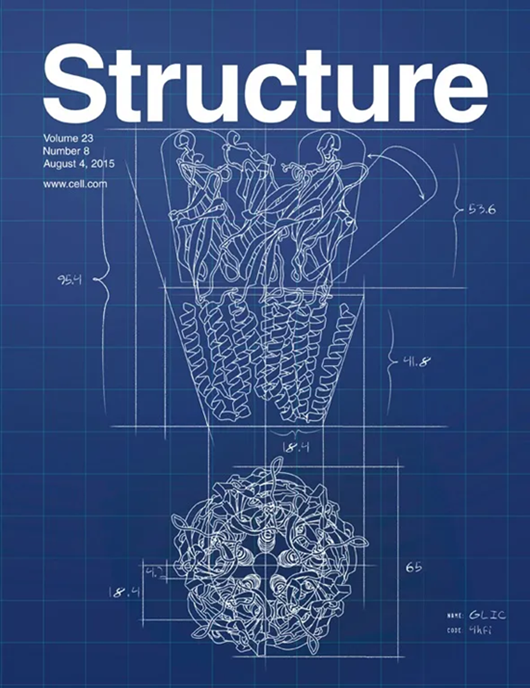冷冻电镜下的视觉蛋白质组学揭示了寡聚蛋白复合物的新结构
IF 4.3
2区 生物学
Q2 BIOCHEMISTRY & MOLECULAR BIOLOGY
引用次数: 0
摘要
单粒子低温电子显微镜(cryoEM)和低温电子断层扫描(cryoET)是揭示独特和功能相关的结构状态的有力方法。在质谱法和机器学习的帮助下,他们有望促进蛋白质组的视觉探索。利用视觉蛋白质组学,我们通过冷冻电镜检查从复杂细胞环境中分离的结构,以鉴定和分类分子结构和复合体。通过比较CryoID、DeepTracer和ModelAngelo三种自动模型构建程序,我们确定了从固氮细菌Azotobacter vinelandii部分纯化的提取物中提取的六种不同的低聚蛋白复合物的特性,包括两种原始的低聚结构。总的来说,通过研究接近天然的低聚蛋白状态,冷冻电镜下的视觉蛋白质组学揭示了与原位观察到的相关物种相对应的独特结构。本文章由计算机程序翻译,如有差异,请以英文原文为准。

CryoEM-enabled visual proteomics reveals de novo structures of oligomeric protein complexes
Single particle cryoelectron microscopy (cryoEM) and cryoelectron tomography (cryoET) are powerful methods for unveiling unique and functionally relevant structural states. Aided by mass spectrometry and machine learning, they promise to facilitate the visual exploration of proteomes. Leveraging visual proteomics, we interrogate structures isolated from a complex cellular milieu by cryoEM to identify and classify molecular structures and complexes de novo. By comparing three automated model building programs, CryoID, DeepTracer, and ModelAngelo, we determine the identity of six distinct oligomeric protein complexes from partially purified extracts of the nitrogen-fixing bacterium Azotobacter vinelandii using both anaerobic and aerobic cryoEM, including two original oligomeric structures. Overall, by allowing the study of near-native oligomeric protein states, cryoEM-enabled visual proteomics reveals unique structures that correspond to relevant species observed in situ.
求助全文
通过发布文献求助,成功后即可免费获取论文全文。
去求助
来源期刊

Structure
生物-生化与分子生物学
CiteScore
8.90
自引率
1.80%
发文量
155
审稿时长
3-8 weeks
期刊介绍:
Structure aims to publish papers of exceptional interest in the field of structural biology. The journal strives to be essential reading for structural biologists, as well as biologists and biochemists that are interested in macromolecular structure and function. Structure strongly encourages the submission of manuscripts that present structural and molecular insights into biological function and mechanism. Other reports that address fundamental questions in structural biology, such as structure-based examinations of protein evolution, folding, and/or design, will also be considered. We will consider the application of any method, experimental or computational, at high or low resolution, to conduct structural investigations, as long as the method is appropriate for the biological, functional, and mechanistic question(s) being addressed. Likewise, reports describing single-molecule analysis of biological mechanisms are welcome.
In general, the editors encourage submission of experimental structural studies that are enriched by an analysis of structure-activity relationships and will not consider studies that solely report structural information unless the structure or analysis is of exceptional and broad interest. Studies reporting only homology models, de novo models, or molecular dynamics simulations are also discouraged unless the models are informed by or validated by novel experimental data; rationalization of a large body of existing experimental evidence and making testable predictions based on a model or simulation is often not considered sufficient.
 求助内容:
求助内容: 应助结果提醒方式:
应助结果提醒方式:


